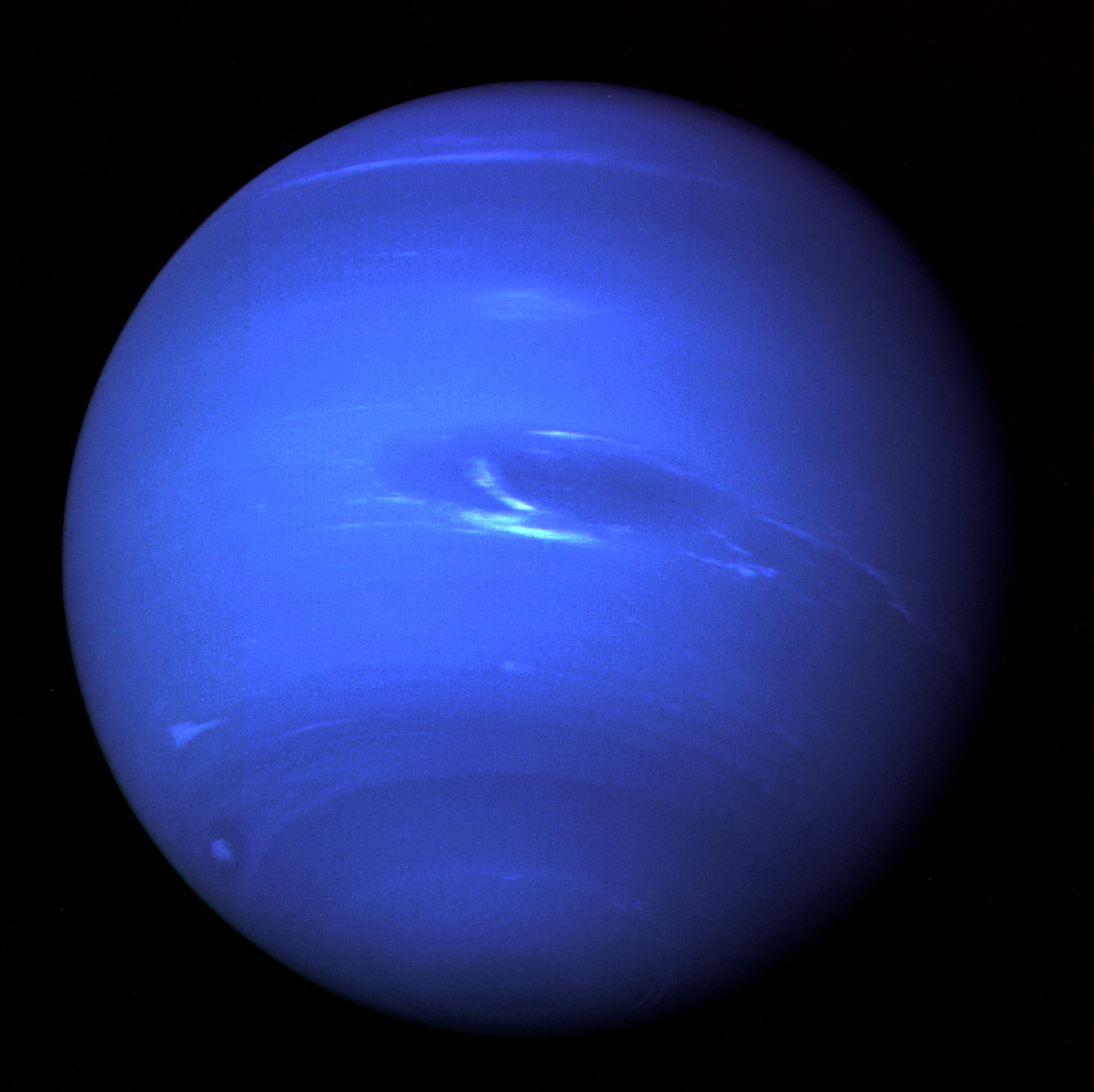The Biggest Mysteries of Neptune
Neptune's Unanswered Questions
To date, there has been only one mission to Neptune, the Voyager 2 flyby of 1989. That flyby capped a "grand tour" of the outer planets that took advantage of a unique gravitational alignment to slingshot the spacecraft from Jupiter to Saturn to Uranus to Neptune.
While there is no mission to Neptune currently funded, a Uranus orbiter and probe proposed in the Planetary Decadal Survey of 2013-2022 could be adapted to explore Neptune if the current alignment of Jupiter were more favorable, Amy Simon, a senior scientist for planetary atmospheres at the NASA Goddard Space Flight Center, told Space.com.
Until another spacecraft can get out there, scientists must rely on ground-based telescopes such as Keck II, and space-based observatories such as the Hubble Space Telescope and the Kepler space telescope, to get occasional glimpses of Neptune in between their other duties. This leaves a lot of unanswered questions about the blue planet. Here are some of the top queries raised by Simon.
Why are the winds so fast?
Neptune is a world of speedy winds. They have been clocked going at 500 meters (1,640 feet) per second, said Simon. This is about four times the speed of the fastest winds measured on Jupiter. At high altitudes, Neptune's winds can go faster than 1.5 times the speed of sound, or 1,100 mph (1,770 km/h), according to NASA.
Also, for some reason, the winds on Neptune are blowing westward, or backward to the rotation of the planet. Research published in the journal Nature in 2013 suggested the winds on Neptune and Uranus would be in thin layers no more than 600 miles (1,000 kilometers) thick. This shallow depth suggests that condensing and evaporating moisture could create the winds.
Why is Neptune's magnetic field offset?
Uranus and Neptune have relatively similar size, composition and location, so researchers suspect the two planets have somewhat similar formation histories as well. Uranus and Neptune also both have off-kilter magnetic fields, which distinguishes them from the bigger gas giants, Saturn and Jupiter. Specifically, if you were to overlay a magnet on those planets, the magnet would not line up with the center.
"We have no idea how you even do that," Simon said.
Breaking space news, the latest updates on rocket launches, skywatching events and more!
Because magnetic fields are created by moving currents, it is believed that all planets with magnetic fields, including Earth, have conductive material moving in their centers. But because Neptune's magnetic field is tilted at 47 degrees to the planet's rotation, it's clear that rotation and magnetism are not inherently aligned.
"Neptune's magnetosphere undergoes wild variations during each rotation because of this misalignment," NASA wrote on a page about Neptune.
Why does it shed more heat than it gets?
Neptune receives heat from the sun, like all other planets, but there seems to be something fierce inside the planet that makes it generate more heat than it receives. Simon said scientists want to know why Neptune generates such heat, because this affects weather processes on the planet.
"The temperature difference between Neptune's strong internal heat source and its frigid cloud tops, about minus 260 degrees Fahrenheit [minus 162 degrees Celsius], might trigger instabilities in the atmosphere that drive large-scale weather changes," NASA officials said in a 2011 statement.
Measurements from the European Space Agency's Infrared Space Observatory in the 1990s showed the planet is radiating at minus 351 F (-213 C), roughly 25 degrees F (45 degrees C) warmer than what it should be without an internal heat source.
What happened to the 'Great Dark Spot'?
The "Great Red Spot" is the most famous feature on Jupiter (and the solar system's biggest storm), and for reasons that are still poorly understood, that spot has been shrinking in size for decades. So, scientists were intrigued when they saw a corresponding "Great Dark Spot" on Neptune during Voyager 2's flyby in 1989.
Another detailed observation of Neptune was in 1995, when the new Hubble Space Telescope turned its eye to the other blue planet. By then, however, the spot had mysteriously vanished. It could have dissipated at the equator, but scientists do not know for sure how exactly it disappeared, Simon said. Later that year, Hubble found what might be another dark spot, but it is difficult to determine, because the photo resolution of Neptune is so poor at this distance from Earth.
What is Neptune's interior made of?
Because astronomers can't see into Neptune, it's difficult to know what its interior is made of. A 2003 model from the Lunar and Planetary Institute suggests an atmosphere of hydrogen, methane and helium. Below that atmosphere is liquid hydrogen, methane and helium, with even lower levels of other materials, including liquid hydrogen compounds, nitrogen and oxygen. The core (if there is one) would be rocky and icy.
It will take measurements of other planets by current NASA spacecraft to better predict the interior composition of Neptune, Simon added. That's one of the prime missions of Juno, which arrived at Jupiter this July. Also, in 2017, the Cassini spacecraft will take a suicidal plunge into Saturn, measuring as much as it can about the atmosphere and interior of that planet before disintegrating.
Follow Elizabeth Howell @howellspace or Space.com @Spacedotcom. We're also on Facebook and Google+.

Elizabeth Howell (she/her), Ph.D., was a staff writer in the spaceflight channel between 2022 and 2024 specializing in Canadian space news. She was contributing writer for Space.com for 10 years from 2012 to 2024. Elizabeth's reporting includes multiple exclusives with the White House, leading world coverage about a lost-and-found space tomato on the International Space Station, witnessing five human spaceflight launches on two continents, flying parabolic, working inside a spacesuit, and participating in a simulated Mars mission. Her latest book, "Why Am I Taller?" (ECW Press, 2022) is co-written with astronaut Dave Williams.






